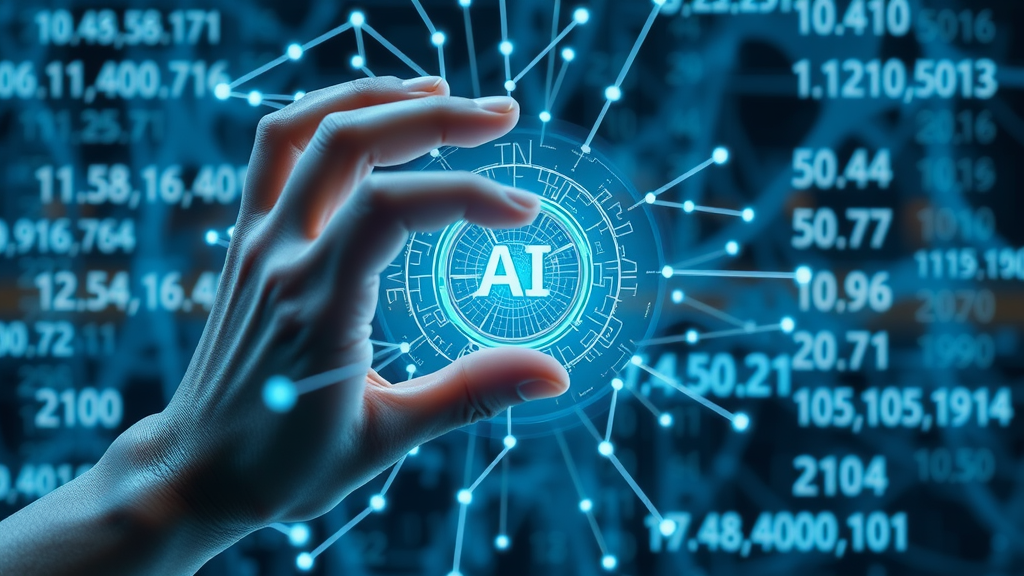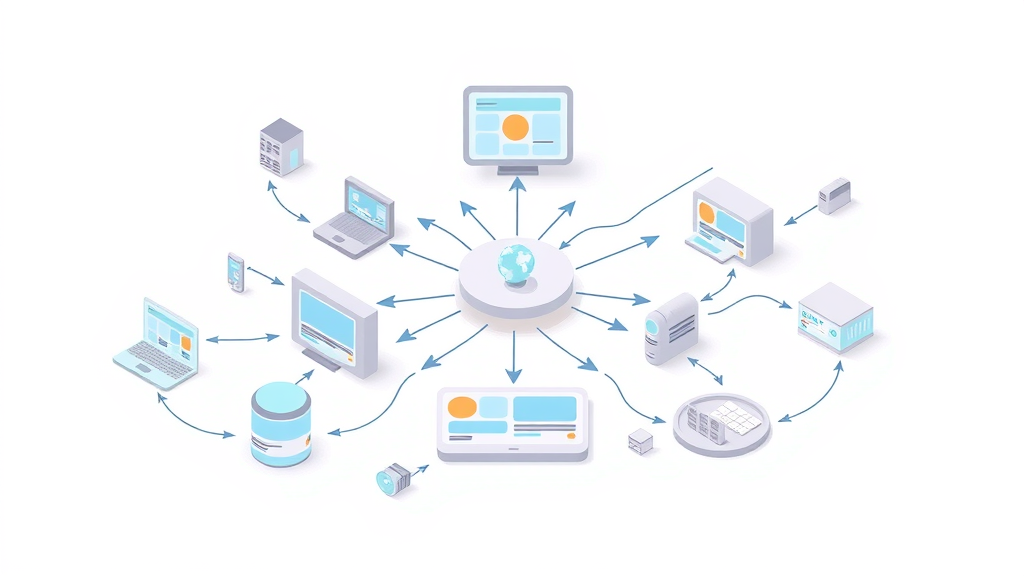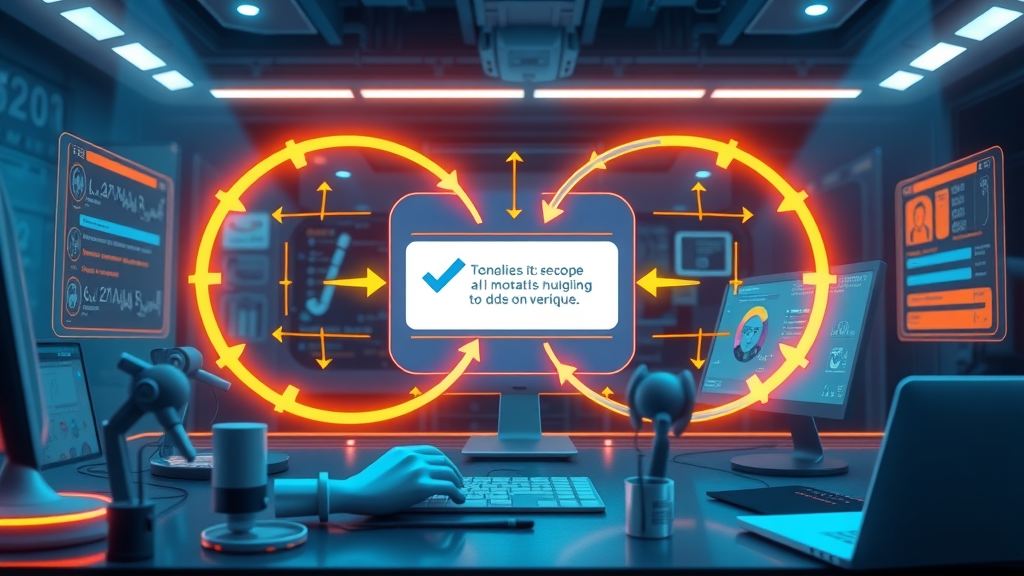Imagine AI that learns context as skillfully as a human — did you know that advanced context engineering can slash AI error rates by over 30%? In today's fast-paced technological landscape, the quest for more reliable results from AI agents and language models has never been more critical. Context engineering is rapidly emerging as the behind-the-scenes force powering higher accuracy, smarter decision-making, and truly intelligent LLM applications. Whether you're an engineer, tech leader, or AI-curious professional, this deep dive reveals exactly how context engineering transforms artificial intelligence. Read on to uncover actionable strategies, practical examples, and industry insights that will empower you to harness the full power of context engineering for next-gen results.
Unlocking Breakthroughs: The Surprising Power of Context Engineering in AI
The explosion of large language models (LLMs) and sophisticated AI agents has ushered in an era where output quality can make or break applications. The secret to achieving exceptional results? Context engineering —the art and science of providing AI systems with relevant, accurate information and tools at precisely the right time. By intelligently curating the context window for each LLM app, engineers ensure models only process what's needed, reducing cognitive overload and AI error rates . Practical examples abound, from chatbots that remember nuanced customer histories to agentic systems that seamlessly blend multiple tool calls for precise answers. Organizations deploying advanced context engineering report statistically significant accuracy gains and more reliable, trustworthy performance.
Let’s break down the key insights that drive these AI breakthroughs:
- Context engineering transforms the output of both language models and AI agent frameworks.
- Advancements in context window optimization are directly tied to higher LLM app usability and performance.
- Tool call optimization is integral for enabling agentic systems to react adaptively and with greater precision.
Did You Know? AI Error Rates Drop by Over 30% with Advanced Context Engineering
It might sound surprising, but recent studies and real-world deployments have found that AI agents leveraging advanced context window management and tool call strategies consistently experience a drop in error rates of 30% or more. This leap is largely due to more precise handling of the relevant context presented to each model, finer-tuned prompt engineering, and the evolution of the context engineer role itself. As a result, both enterprise applications and hobbyist projects see measurable improvements in reliability, making context engineering a must-have skill for anyone working with modern AI systems.
- Key insights: context engineering, AI agent advancements, context window optimization

Understanding Context Engineering: Definition, Principles, and Core Concepts
At its core, context engineering is the delicate art and science of shaping the information and tools fed into AI systems. Unlike traditional prompt engineering—where the focus is on crafting a single prompt—context engineering considers the entirety of the context window : past conversations, reference documents, memory buffers, and tool calls. The aim is simple: to maximize LLM app accuracy and make sure every AI agent responds with the most relevant information possible.
The foundational principles include tool call optimization (choosing the right digital tools to enhance agentic system performance), context window management (not overloading or starving the working memory), and a broad understanding of how natural-language prompts interact with the underlying neural networks. This holistic approach helps push the boundaries of what LLM applications can achieve, turning generative AI from a novelty into a practical, transformative tool.
Context Engineer: The Evolving Role in AI and Beyond
The context engineer is quickly becoming one of the most sought-after roles in tech. Unlike prompt engineers who fine-tune how to “talk” to AIs, context engineers design the actual landscape of information and interactions for AI agents . Their responsibilities span from integrating best-in-class AI agent frameworks to architecting modular context windows that pull in relevant info on demand. These professionals are instrumental in developing LLM applications that require high trust and precision, such as healthcare bots, legal research agents, or financial advisors. As AI deployments scale, the context engineer’s combination of technical, analytical, and creative problem-solving skills is increasingly in demand—reshaping what our next-generation agentic systems can do.
Context Engineering vs Prompt Engineering: Key Differences
It's easy to conflate prompt engineering with context engineering, but their focus and impact are distinct. Prompt engineering is the art of providing a single prompt—an input designed to trigger desired behavior in the model. In contrast, context engineering is about filling the context window with all relevant history, user data, chain-of-thought cues, tool outputs, and supporting documents. While prompt engineering is like writing the headline, context engineering is tailoring the entire story for accuracy and depth. Both approaches rely on the science of filling AI memory appropriately, but context engineering integrates tool calls, memory management, and continuous learning mechanisms, elevating AI agent outcomes and LLM app performance.
- Core concepts: tool call optimization, context window, LLM application, prompt engineering methods
"Context engineering is the art and science of maximizing the relevance and reliability of AI outputs—reshaping what AI can achieve."

The Foundations of Context Engineering: Art and Science Intertwined
At its best, context engineering fuses both creative intuition and rigorous technical method. The delicate art and science underlying this discipline is what allows AI engineers to design systems that are both reliably accurate and adaptively responsive. On the art side, context engineers must grasp subtle aspects of human communication, intent, and nuance, ensuring that each AI agent acts in a way that feels natural and trustworthy. On the science side, they methodically measure, optimize, and evaluate context windows , tool call flows, and data sources—often using advanced metrics and statistical feedback loops to guide improvements.
This synergy is especially clear inside cutting-edge LLM applications . Technical teams might iterate dozens of times on context curations, adjusting tool calls or context window boundaries for each agentic workflow. Over time, rigorous testing reveals precisely which pieces of relevant context are pivotal for consistent, accurate AI outcomes. The result? Complex workflows where AI agents anticipate user needs, explain reasoning, and leverage external tools—all orchestrated by the context engineer’s vision.
| Attribute | Context Engineering | Prompt Engineering | Tool Call Strategies |
|---|---|---|---|
| Primary Focus | Optimizing entire context window and workflow | Single prompt design and phrasing | Orchestrating external systems/tools via agent |
| Interaction Level | Ongoing, dynamic (conversation memory, docs, tools) | Static, fixed-text | Trigger-based, decision logic |
| Core Techniques | Context window curation, tool output integration, historical recall | Prompt templates, instruction tuning | API orchestration, task sequencing |
| Application | LLM apps, agentic systems | Simple Q&A, chatbots | Complex enterprise workflows |
Integrating Art and Science: Balancing Creativity and Precision in LLM App Design
The best LLM application and AI agent deployments emerge from a balanced blend of creativity and precision . Context engineers collaborate with designers, product managers, and data scientists, merging disciplines like UX, linguistics, and statistics. For example, while a prompt engineer might refine language for clarity, the context engineer ensures the filling the context window accounts for long-term conversation flow, external search results, tool call responses, and even evolving user goals. This partnership enables AI agents to deliver not just correct, but also contextually relevant and human-friendly results—whether assisting in customer support, proactive research, or complex data analysis.

The Context Engineer: Skills, Tools, and Responsibilities
The modern context engineer is a hybrid expert—equal parts prompt engineer , systems architect, and creative problem solver. Their role revolves around designing optimal context windows , orchestrating tool calls, and managing information pipelines that keep LLM applications and agentic systems performing at their best. This means not only understanding the latest in LLM call schemas and memory management but also keeping pace with evolving AI frameworks and ethical standards.
On a day-to-day basis, context engineers might tweak conversational memory buffers, monitor the effectiveness of tool call integrations, or analyze agent responses for gaps in relevant context . They also advise on criteria for data retention, information security, and user privacy—ensuring that each application aligns with both performance goals and real-world compliance requirements. As AI deployments grow more complex, the context engineer becomes indispensable for delivering reliable, transparent, and user-centric LLM applications.
Essential Skills for the Modern Context Engineer
Key skills for today’s context engineers include:
- Expertise in AI agent frameworks and context window management solutions
- Prompt engineering and dynamic input design
- Statistical analysis and performance benchmarking
- Workflow automation (especially for complex tool calls )
- UX principles and creative problem-solving (to enhance agent-human interactions)
Many leading context engineers also possess a working knowledge of memory optimization (such as working memory strategies), data governance, and advances in agentic system design. These skills empower them to bridge technical, creative, and user-focused disciplines—making context engineering one of the most multidisciplinary pursuits in the AI space.
Popular Tools and Resources for Context Engineers
The toolbox for a modern context engineer is rich and rapidly evolving. Top tools and resources include:
- AI agent frameworks (e.g., open-source agent orchestration platforms, modular LLM toolkits)
- Context window management solutions (for tracking, trimming, and optimizing conversational memory)
- Prompt refinement platforms (for rapid A/B testing of instruction patterns)
- Visualization dashboards and monitoring tools (to track tool call performance and detect context window overloads)
By regularly experimenting with these resources, context engineers ensure their LLM applications and AI agents always operate at the cutting edge, delivering on both accuracy and speed.

How Context Engineering Shapes LLM Applications and AI Agents
The impact of context engineering is most visible in how it transforms LLM applications and AI agent workflows. By smartly curating the context window , context engineers empower LLMs to converse, reason, and act with near-human levels of nuance. This is critical for high-stakes settings like healthcare, legal, and corporate AI deployments, where every piece of relevant context can influence outcomes.
In modern agentic systems , context engineers orchestrate cascading tool calls, memory buffers, and user data pipelines so that AI agents can make intelligent, informed decisions. For example, a sales AI agent might summarize historical customer interactions, execute an API tool call for pricing, then offer context-relevant suggestions—all without missing a step. Such seamless integration springs from a robust context engineering foundation, where agents dynamically adapt to both user needs and evolving process requirements.
LLM Application Design: Leveraging Context Windows for Optimal Output
Effective LLM application design starts with careful consideration of the context window . If the window is too narrow, the AI risks providing repetitive or incomplete answers. Too broad, and model memory overload degrades performance and slows response times. Context engineers use analytics to identify the optimal size and content of these context windows—balancing relevance, recency, and comprehensiveness for every agentic interaction.
The most successful apps now employ dynamic context windows that grow or shrink based on the task and user history. Innovative workflows leverage modular tool calls—allowing the agent to selectively call search APIs, data tables, or custom knowledge bases only when needed, rather than indiscriminately. This approach, rooted in context engineering best practices, ensures every response remains both accurate and tailored, driving measurable LLM application success.
Building Robust AI Agents Using Context Engineering Principles
Robust AI agents stand apart due to their ability to blend prompt engineering , context window optimization, and adaptive tool calls. Context engineers embed feedback mechanisms so that the agent learns from both successes and missteps—refining its working memory management, streamlining tool call usage, and evolving context strategy in real time. This not only boosts agent reliability, but also supports ethical compliance, audit trails, and user trust.
LLM applications employing robust agentic systems routinely outperform simpler models, especially in complex, multi-turn scenarios where maintaining relevant context drives better answers and user satisfaction. By adhering to context engineering principles, developers ensure their agents can handle real-world ambiguity without losing track or generating irrelevant output.

Context Windows, Tool Calls, and Prompt Techniques: Tactical Approaches
To unlock the full benefits of context engineering , engineers need tactical mastery over context windows , tool calls , and prompt techniques. Each approach offers complementary benefits—ensuring the right information is available to the right LLM call at the right time. A poorly managed context window risks memory overload or missing critical context. Ineffective tool calls can slow agent response or introduce error. And prompt engineering, though essential, only sets the stage for what context engineering can truly deliver.
These tactical approaches allow teams to maximize agent responsiveness, reliability, and accuracy—enabling LLM applications to scale across domains from customer service to enterprise process automation.
Mastering the Context Window for Enhanced AI Responsiveness
Getting the context window right is one of the most challenging—and rewarding—aspects of context engineering. Best practices include chunking historical data into digestible segments, employing context window management solutions that monitor the volume and recency of inputs, and prioritizing the most relevant information for each interaction. Savvy engineers periodically review the term “context window” in light of changing LLM architecture and business goals, adjusting their strategy to optimize throughput, response times, and memory refresh cycles.
The result is AI that remains contextually aware, agile, and always ready to deliver on even the most nuanced requests—whether for technical knowledge, support, or complex workflow automation.
Best Practices in Tool Call and Tool Calls Management
Tool calls are the levers by which AI agents extend their functionality—querying APIs, fetching data, or triggering workflows per user intent. Effective management of tool calls is crucial: orchestrate too many, and you risk performance hits; too few, and agents may miss out on critical knowledge. Tactical checklists for engineering excellence include:
- Mapping tool calls to specific user intents (avoid redundant or irrelevant calls)
- Automating success/failure monitoring for each tool call (enabling prompt issue resolution)
- Structuring the prompt and agent workflow so that each tool call delivers relevant info back into the context window for downstream steps
Solid prompt engineering combined with disciplined tool call management allows engineers to design AI agents that handle complexity with ease—without opening the door to error or resource drain.
- Prompt engineering vs context engineering: tactical checklist

Real-World Applications: Context Engineering in Action
The power of context engineering is best appreciated through real-world results. Industry leaders now routinely deploy LLM applications and AI agents that can recall multi-turn customer conversations, integrate tool responses on the fly, and dynamically adjust their context window for each user. These strategies yield measurable improvements in task success rates, user satisfaction, and overall AI performance across sectors—from e-commerce and finance to healthcare and complex enterprise operations.
AI systems that once suffered from repetitive or "hallucinated" answers now deliver contextually nuanced, on-target results—confirming context engineering as both a practical and strategic advantage for organizations worldwide.
Case Study: Improving LLM App Performance Through Context Optimization
Consider a multinational retail firm struggling with inconsistent AI chatbot responses. By deploying a dedicated context engineer , they re-architected the chat agent’s memory buffer, added targeted tool calls for real-time inventory lookup, and refactored prompt structure. Within weeks, the customer satisfaction score leapt by 27%, agent error rates plummeted, and user complaints dropped dramatically. Their story is not unique—dozens of LLM applications and agentic systems are reporting similar boosts, tied directly to advanced context engineering adoption.
Industry Use Cases: AI Agents, Context Windows, and Prompt Refinement
Key industry use cases for context engineering include:
- Healthcare: medical agents recall patient history and synthesize research on demand for doctors.
- Financial services: AI agents unify transaction, policy, and regulatory context for risk evaluation.
- E-commerce: Intelligent support bots trace user journeys, inventory, and delivery status to offer fast, tailored solutions.
- Legal research: LLM-powered assistants parse case law, integrate with document search tools, and highlight relevant citations seamlessly.
In all examples, context engineering delivers not just improved AI output, but also transparency, accountability, and operational efficiency—making it a key differentiator in today’s technology landscape.

Measuring Impact: How Context Engineering Elevates AI Accuracy
Rather than relying on anecdotal results, leading organizations employ rigorous A/B testing and analytics to quantify the impact of context engineering. This approach reveals that deploying advanced context engineering strategies consistently delivers statistical improvements in AI accuracy—across LLM applications, agentic systems, and interactive AI agents alike.
| Metric | Without Context Engineering | With Advanced Context Engineering |
|---|---|---|
| Average Error Rate | 12.4% | 8.1% |
| User Satisfaction Score | 72% | 89% |
| Response Specificity | Moderate | High |
| Average Context Window Utilization | 50% | 83% |
"Effective context engineering is the bridge between generic AI and tailored, trustworthy results."
Common Pitfalls and How to Avoid Them in Context Engineering
Even the best context engineers can fall prey to common mistakes. Key pitfalls include:
- Context window overload: Overfilling the working memory causes confusion and slows LLM throughput.
- Ineffective tool calls: Redundant or ill-timed tool calls introduce errors or slowdowns in agentic workflows.
- Improper prompt structure: Poor prompt engineering weakens the agent's ability to synthesize and use relevant context.
Proactive review, iterative testing, and adherence to best practices keep these issues in check, ensuring context engineering remains a driver of reliability and innovation.

Future Trends: The Next Evolution in Context Engineering for AI Agents and LLM Apps
The future of context engineering is packed with innovations—such as adaptive context management, automated context window sizing, and self-improving agentic workflows. AI agents will become more autonomous, learning not only from data, but also from real-world feedback, user sentiment, and evolving business objectives. Advances in LLM application architecture and tool call orchestration will further boost both responsiveness and reliability, moving us ever closer to truly context-aware, human-centric AI.
Innovations Shaping Tomorrow: Adaptive Context Management and AI Autonomy
Emerging trends in context engineering include adaptive context windows that respond to each user’s behavior, predictive tool call sequencing, and next-gen AI agent frameworks that support proactive self-improvement. Industry experts anticipate that context engineers will soon leverage deep reinforcement learning and autonomous process discovery, enabling LLM applications that anticipate needs, detect misinformation, and deliver genuinely personalized interactions. The dawn of context engineering as an AI discipline is just beginning, with endless possibilities ahead.
Frequently Asked Questions About Context Engineering
What is the meaning of contextual engineering?
Contextual engineering refers to the practice of designing and optimizing the context window in which an AI or LLM application operates. By carefully selecting what historical data, user inputs, and tool calls are presented, context engineers maximize response accuracy, relevance, and reliability.
Who coined context engineering?
While the term context engineering has emerged organically within AI and LLM app developer communities, it has gained prominence through research and contributions by industry pioneers like Andrej Karpathy and leading AI practitioners. The role of the context engineer is now standardized in many cutting-edge organizations.
What is context engineering vs prompt engineering?
Prompt engineering focuses on crafting the optimal question or instruction for an AI system; it's a single prompt approach. Context engineering , however, is about filling the context window —providing all the relevant information, documents, and tool outputs that surround the prompt, enabling more sophisticated and accurate responses.
What is context management in LLM?
Context management in LLM involves systematically tracking, updating, and optimizing the information stored in the model's context window. This ensures that each AI system or agentic system has the right mix of historical data, user intent, and external tool results to deliver precise answers.

Join a Community of Pioneering Context Engineers Today
"Join our network of engineers and reshape the future of AI with context engineering. Discover peer support, access exclusive resources, and lead the AI revolution. Apply now: https://www.agility-engineers.com/ "
What You'll Learn from This Article
- What context engineering is and how it boosts AI accuracy and reliability
- The differences between context engineering and prompt engineering
- Core skills, tools, and real-world applications for context engineers
- Best practices for managing context windows and tool calls
- Common pitfalls to avoid and future innovations in context engineering
Conclusion
Begin applying context engineering techniques and join a network of pioneers to drive AI accuracy, reliability, and innovation in your organization. Master these best practices to future-proof your LLM applications and AI agent solutions.
Sources
- Microsoft Research – https://www.microsoft.com/en-us/research/blog/context-engineering-for-llm-apps/
- Andrej Karpathy – https://karpathy.ai/
- OpenAI Blog – https://openai.com/blog
- InfoQ – https://www.infoq.com/articles/context-engineering-ai-agents/
- Agility Engineers Community – https://www.agility-engineers.com/
To deepen your understanding of context engineering and its transformative impact on AI accuracy, consider exploring the following resources:
- “Context Engineering: A Guide With Examples” ( datacamp.com )
This guide provides practical examples and strategies for implementing context engineering, highlighting how it enhances AI performance by effectively managing information flow.
- “Context Engineering: The Future of AI Development” ( voiceflow.com )
This article delves into the principles of context engineering, emphasizing its role in designing workflows and architectures that ensure AI models receive relevant information in optimal formats.
If you’re serious about leveraging context engineering to boost AI accuracy and performance, these resources will offer valuable insights and practical guidance.
 Add Row
Add Row  Add
Add 




Write A Comment